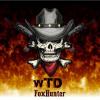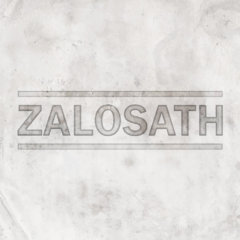Need help with storage configurations
ok so i'm going with WD, I just asked with Seagate NAS is a nice option.
And I definitely not going with a single 4TB because I need a way that I don't loose all my data if one of my drives fails, so I'm going with RAID 1 or RAID 10 (4x 2TB).
With what drive should I go and what kind of RAID, 1 or 10? Seagate NAS, WD SE or WD RE ? (Remembering that I need fast drives @ 7200 RPM and 4x 2TB)
Here are my picks according to your need for the fastest ones.
2 x Western Digital WD SE WD4000F9YZ 4TB in RAID 1
Other thoughts
- WD RE version too expensive.
- Seagate NAS and WD Red are 5900 rpm.
-
why RAID1.
- Simple to manage and troubleshoot if any error.
- you can expand easier in future.
- Double drive count, double chances of a failure.
- 4 drives cost more than 2 drives now (used to be the other way around not long ago)
-
why pay extra $$
- more overall performance
- extra warranty (you can sell them off at year 3 and still make over $100 each!)
- bragging rights of enterprise drives :D
Okay, guys, so here a poll to be more organized.
Poll only had 2TB, though I'm assuming you meant 4TB if you plan a for RAID1.
Agreed.
Google actually did a study a few years back where they found temperature to be much less
of an influencing factor than commonly thought. Also, workload was not very influential
either.
There recently was a topic with a similar question (disk temperatures and failure rates),
I linked the study and quoted some excerpts in that thread if you want to read more about
it.
Agreed on the air density, although usually the altitude in which a drive is supposed to be
run is usually indicated on it I think (not totally sure).
They did say that they don't have reliable data about the influence of vibrations on
drive failure rate somewhere in the study. Personally I tend to agree that lots of
vibrations probably aren't very healthy for your drives (most mechanical systems
respond to vibrations with unfavorable results in the long run).
I think it's important to note that usually a head crash is the result of shocks and
not the "normal" vibrations encountered in the disks environment (even in the worse
ones like high-density racks), at least to my knowledge (though I haven't been able
to find any reliable data on that and am willing to be proven wrong).
EDIT:
I have some RE4's, and I really love them. I think the WD SE's are a pretty great
option.
Backblaze also mentioned in their blog post that they found very little correlation between temperature and failure rates of the desktop drives they use, and even goes to say which drives B).
I am a Red guy myself - WD does have some higher end drives, but for the cost, and the technology they bring, Red drives are very cost effective. I have used these for the past year in multple builds and have had zero issues with performance. I have some clients using these with 16 IP cameras writting to RAID 10 arrays 7/24 with no issues.
I'm a Green guy. lol. I got a bunch of them before the huge price jump. Got them mainly in backups and cramped storage places.. The RED's where too expensive at the start, but the price has come down considerably. Now with direct competition from Seagate, this will be interesting. If you think about it, the WD SE cost about the same as the RED drives when they first came out, and the 4TB cost less then 2x2TB now!
Here's some more food for thought:
So I fired up Premiere Pro CS4 and tested with some storage devices and 10 x 1080p videos (1440 x 1080 h.264 from canon camcorder)
videos: 10 videos, various length, total 3.2GB
Importing time:
- 1Gb/s network (from dedicated win server+raid5) : 9.7 - 11 sec
- WD Blue 250GB: 4.2 - 4.6 sec
- WD RE3 250GB: 3.4 - 4.1 sec
- Samsung 830 256GB: 2.6 sec (consistant)
Rendering Drive Read:
- I made a video consisting of 10 simultaneous streams... like those youtube menus. no effects added.
- MAX drive read (Using SSD to rule out bottleneck):
- rendering preview: 59MB/s
- redering 1080p@60fps: 46MB/s
- 12min 32sec for 30sec clip.
So my processor is: 2600K@ 4.8Ghz
I have a 680GTX, but I think that's only for effects.
So unless I'm doing something wrong, my WD Green drive can handle that with ease lol.



















Create an account or sign in to comment
You need to be a member in order to leave a comment
Create an account
Sign up for a new account in our community. It's easy!
Register a new accountSign in
Already have an account? Sign in here.
Sign In Now